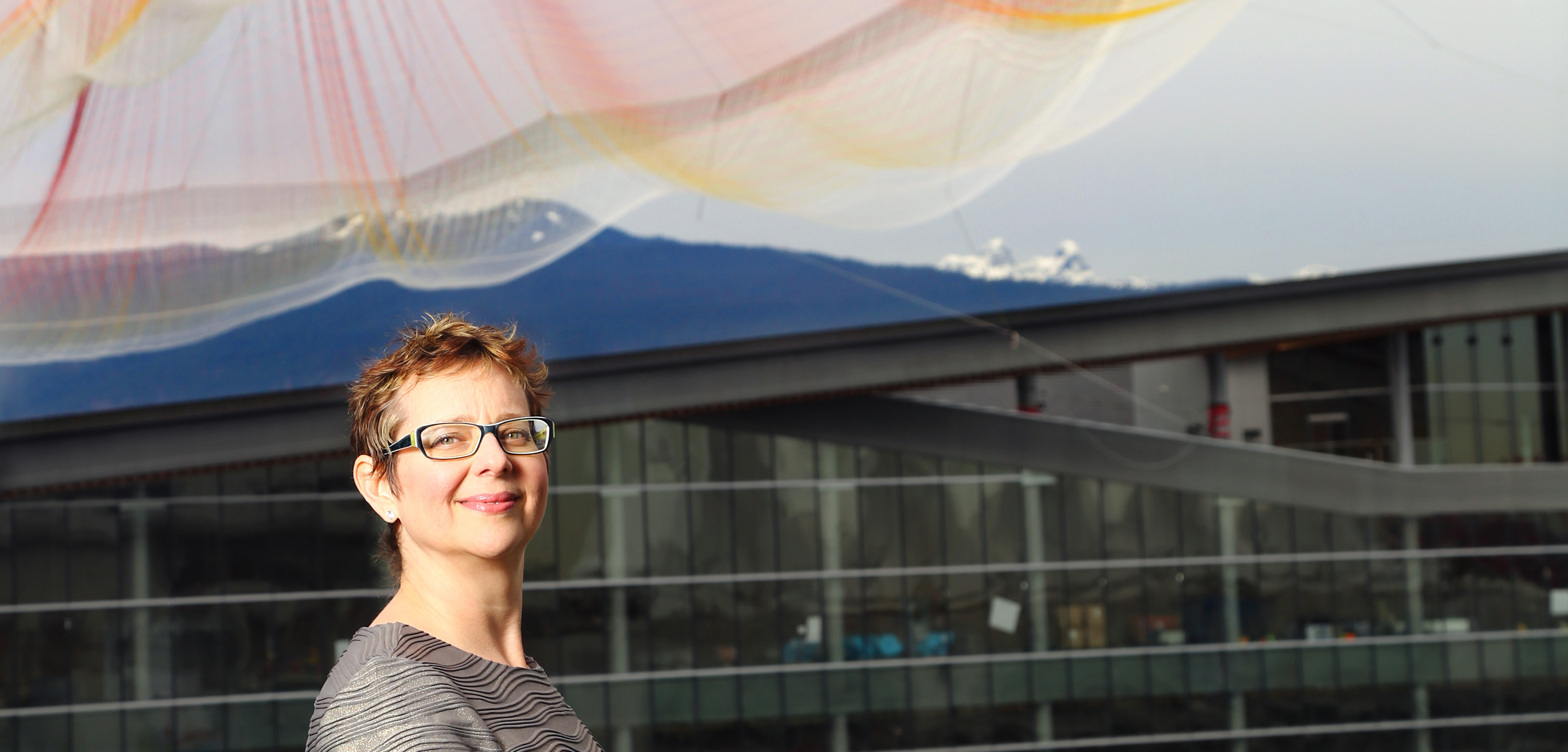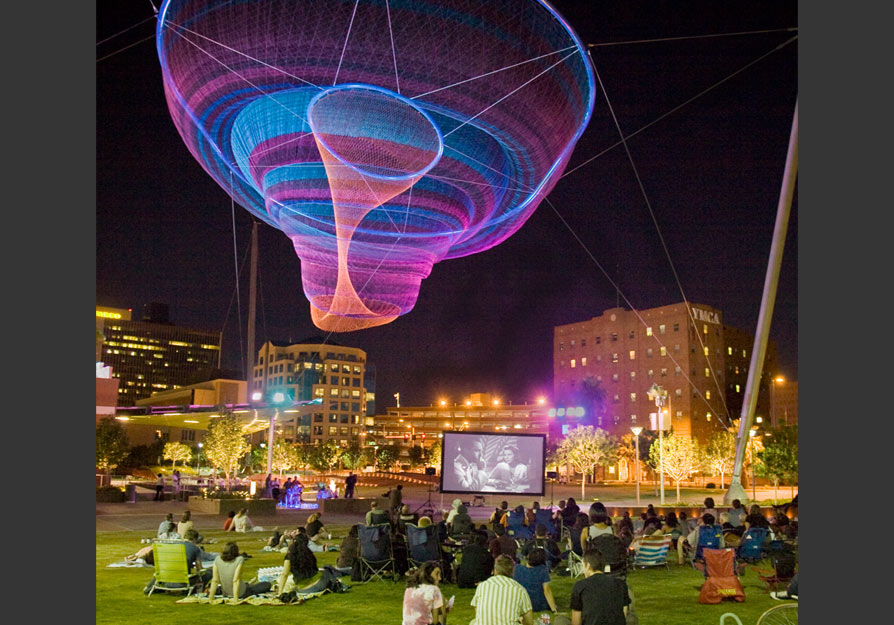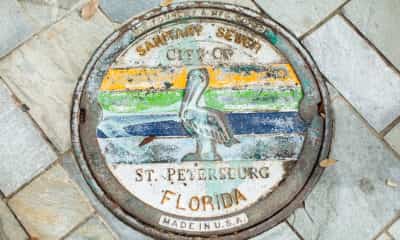Innovate
Pier artist Janet Echelman: The Catalyst interview

The only consistent thing about public art is that everyone will have a different opinion of it. The word “public” kind of ensures that.
Thursday’s rejection of artist Janet Echelman’s sculpture by the St. Petersburg City Council brought the city’s sometimes-raging public art conversation to a close. For now.
(Read about the Council meeting here.)
Echelman’s billowing, multi-colored hanging sculpture, proposed for Spa Beach Park at the new St. Pete Pier, would measure about a football field in length, suspended from 65-foot pylons. The strong, net-like structure would move with the wind, and be illuminated at night.
“Since the City Council is set to reconsider the issue in two weeks, we don’t believe a two-week delay would be a problem for us,” Echelman says.
The Council is investigating other pier-centric locations for the cutting-edge work.
Is she disappointed by this development, after months of research and impact studies? Echelman won’t say.
“We have been pleased to see the support from a wide variety of residents about having an Echelman sculpture in St. Petersburg,” she explains.
“Our focus continues to be on working with the City to see how best to facilitate a sculpture in the Pier District, knowing this would play a major role in St. Petersburg’s growing status as a city of the arts.”

Rendering of the Echelman sculpture at Spa Beach, St. Pete Pier, at night.
A child of the bay
She was born 52 years ago in Tampa, and grew up in the Davis Islands area, right on the bay; her father was a doctor, her mother a painter and silversmith. In 1912, Echelman’s great-grandmother launched Sierkese Department Store on Central Avenue in St. Pete, which would go on to become the longest-running family-owned retail center in the city.
When Janet was a student at Plant High in Tampa, her mother and aunt opened five clothing boutiques called the Boulevard Shops of Florida. “I grew up picking fabric scraps off the back room floors, mesmerized by the vibrant chiffons and silks,” she recalls. “So I guess it should be no surprise that I’m inspired by the historic fabric colors and patterns of the parasols that adorned Spa Beach.”
Her work – moving and changing like fine webs in the breeze and seeming to transform the very air we breathe – is unlike any other public art in the world.
“I see art, architecture and landscape as interwoven elements that we can design in a way that improves our cities,” Echelman explains. “I want to use my art to create a soft counterpoint to the hard-edged buildings in cities and offer moments of pause in our busy lives.
“I am constantly in search of inspiration from daily life. I guess this is my way of making sense of the world – finding a tiny little moment within the larger unfolding story of humanity on our planet.”
Art and innovation
Janet Echelman’s large-scale public art is among the most famous and talked-about in the world. Permanent installations include the Bill and Melinda Gates Foundation campus in Seattle, San Francisco International Airport, public spaces in Porto, Portugal and the Smithsonian Art Museum’s Renwick Gallery in Washington, D.C.
Her towering, gossamer works have transformed the urban experience on five continents, with temporary installations in China, Korea, Dubai, Italy, Chile, Great Britain, Austria, Mexico, Spain, Australia, India, Japan and beyond.
Recipient of the Guggenheim Fellowship, the Harvard University Loeb Fellowship, a Fulbright Lectureship and the Aspen Institute Crown Fellowship, her TED talk “Taking Imagination Seriously” has been translated into 35 languages with more than one million views.
She recently received the Smithsonian American Ingenuity Award in Visual Arts, honoring “the greatest innovators in America today.”
The pier concept, the artist explains, originated with Spa Beach itself. “The site has a rich history and visual culture related to leisure that stretches back through the last century,” she says. “I used historical postcards showing the Mediterranean revival architecture of the pier, combined with colorful patterned beach parasols, and these patterns and palette served as a touchstone during my design process.
“I also looked at the marine life growing around the site, especially at the colonies of barnacles that thrive underneath the pier, which led me to combine three parasol forms into one sculpture.”
Echelman’s works use a variety of highly-engineered fibers, 100 percent resistant to UV light, high temperatures, pollution, and even chemical reactions. “My preliminary design is for a sculpture that can withstand 150+ mph wind, to fully satisfy all local building code relevant to the Spa Beach site, while creating the fullest experience for individuals visiting the art.”
A hypothetical situation
St. Pete Catalyst: I’m standing on Bayshore Drive, looking out at the sculpture from hundreds of yards away. It’s a little windy. Can you describe the effect the art is having on me? What is it doing, how is it interacting with its environs? What do you want me to take away from the experience?
Echelman: “Maybe you notice the changing patterns of wind and sunlight as the soft fibers in the sculpture gently move and pulse over several minutes or hours. Maybe you have the chance to form a relationship with the sculpture, watching its interaction with weather and sunlight as it changes through the years.
“If someone pauses to notice the interaction with wind and sunlight as it changes in the midst of their daily life, then it has achieved my personal artistic goal.
“The artwork also reminds us of our interconnectedness on every scale. When I look at the sculpture, I see a physical proof of our ability to work together in shaping our world. An action in one part of the world can cause ripple effects all over the planet. As an individual I can sometimes feel powerless. But then I imagine a length of thread, braided and knotted together into these netted forms, which exhibit immense strength and resiliency.”
Echelman, who lives in Brookline, Mass. with her husband and teenaged children, is particularly proud of the fact that the Spa Beach site is surrounded by water on three sides.
“My sculpture,” she beams, “will be ‘choreographed’ by the lively wind currents coming off of Tampa Bay.”

“Her Secret is Patience” by Janet Echelman, Phoenix, Arizona (2009).
(All images provided by Echelman Studios.)







